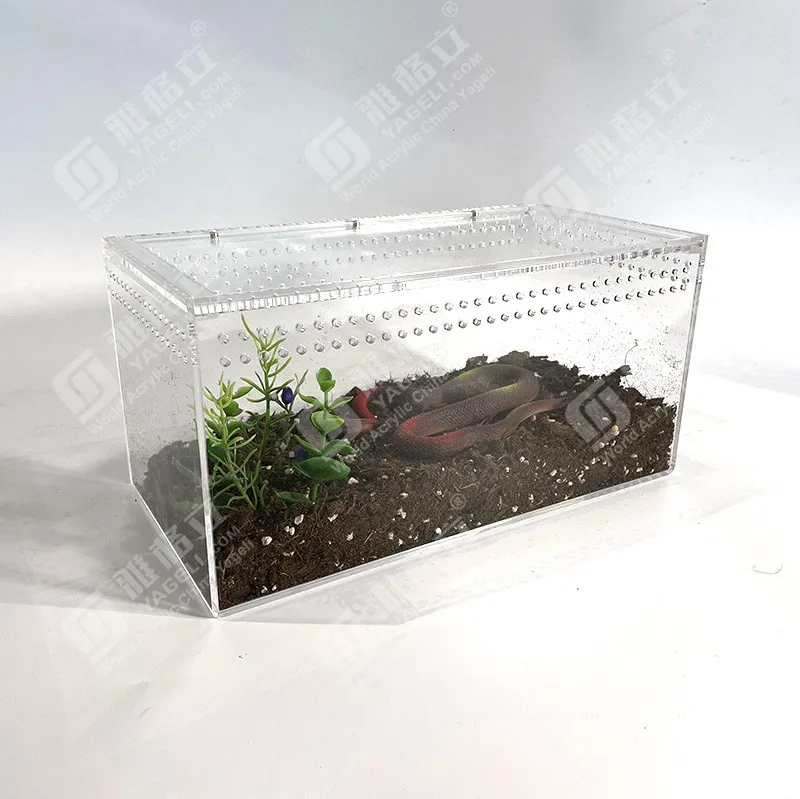Choosing the Right Tarantula Tank Acrylic
Bringing a tarantula into your home is an exciting experience. One of the most important decisions you’ll make is choosing the right enclosure. Acrylic tanks have become a popular choice for tarantula keepers, offering several advantages over traditional glass tanks. This guide will walk you through everything you need to know about selecting an acrylic tarantula tank, from size and ventilation to safety and maintenance. Choosing the right tank is crucial for your tarantula’s well-being, providing a secure and comfortable habitat where it can thrive. Proper tank selection also contributes to your ease of care, making tarantula keeping a rewarding experience.
Acrylic vs. Glass Tarantula Tank
The debate between acrylic and glass tanks often arises when setting up a tarantula enclosure. Both materials have their pros and cons. Glass tanks are typically less expensive upfront and are readily available. However, they can be heavier, more prone to cracking or shattering, and may not insulate as well, leading to temperature fluctuations. Acrylic tanks, on the other hand, are generally lighter, more durable, and offer better insulation. This can be particularly beneficial for maintaining the correct temperature and humidity levels within the enclosure. Acrylic also provides a clearer view, allowing you to observe your tarantula more easily without distortion. The choice often comes down to personal preference, budget, and the specific needs of your tarantula species.
Advantages of Acrylic Tanks
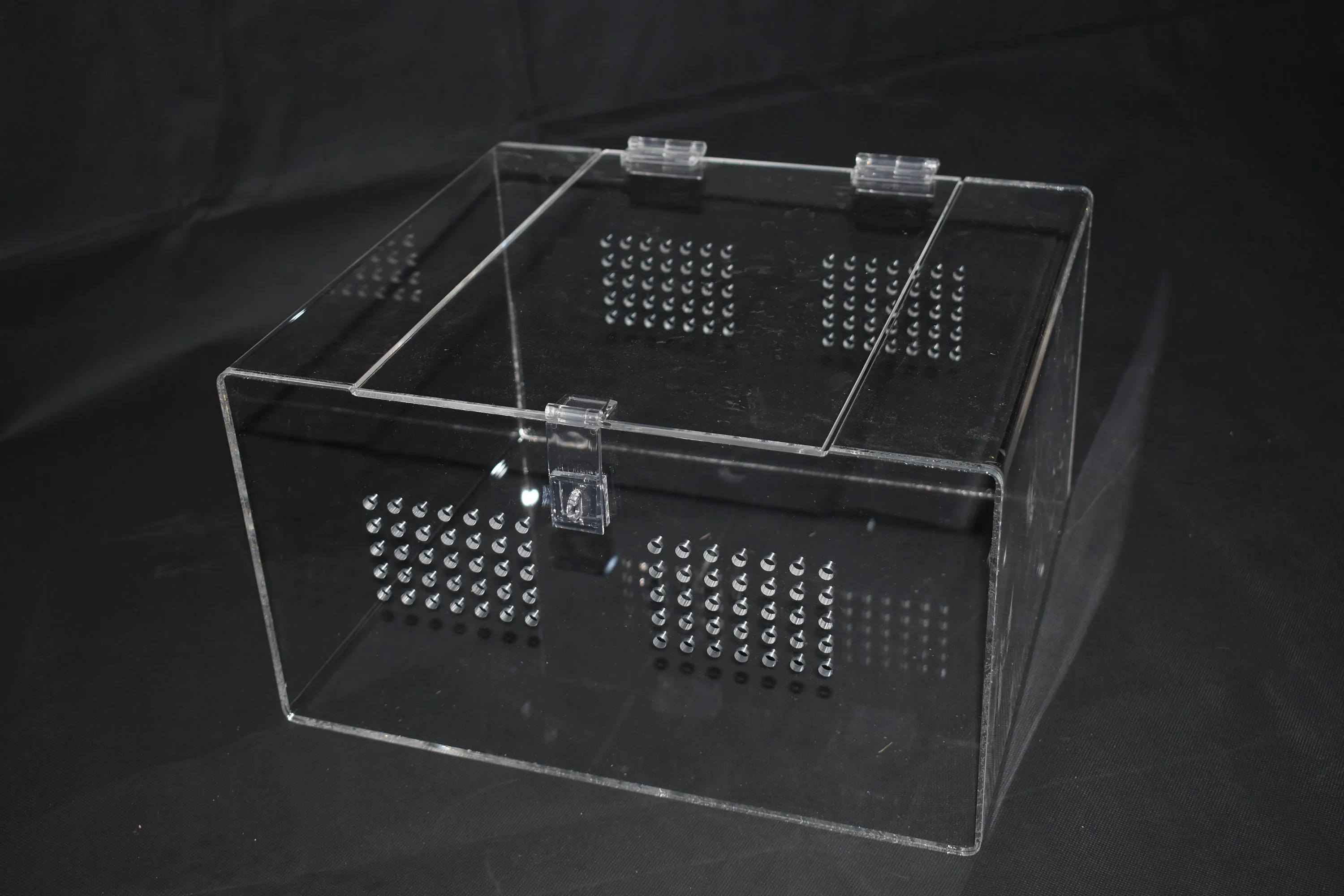
Acrylic tanks offer several advantages that make them a favorite among tarantula keepers. First and foremost, acrylic is highly durable and resistant to cracking or shattering, a significant safety benefit. Acrylic provides superior insulation, which helps maintain a stable temperature inside the tank, crucial for your tarantula’s health. Acrylic is also significantly lighter than glass, making the tank easier to move and handle during cleaning and setup. The clarity of acrylic is another advantage, offering an unobstructed view of your tarantula. Finally, acrylic tanks come in various designs, including those with integrated ventilation and secure locking mechanisms, enhancing the overall safety and functionality of the enclosure. Acrylic tanks are built to last and can create a better environment.
Durability of Acrylic
One of the key benefits of acrylic is its exceptional durability. Acrylic is considerably more impact-resistant than glass, reducing the risk of breakage. This is especially important if you have children or other pets around. Acrylic can withstand accidental bumps and knocks without shattering, providing a safer environment for both your tarantula and your family. In addition to being impact-resistant, acrylic is also less prone to scratching than glass, ensuring the tank remains clear and aesthetically pleasing over time. This durability makes acrylic a long-term investment, as it is less likely to need replacement due to damage. A well-maintained acrylic tank will last for many years, providing a secure home for your tarantula.
Acrylic Tank Safety Considerations
When choosing an acrylic tank, safety is paramount. Look for tanks with secure lids or locking mechanisms to prevent your tarantula from escaping, especially if you have a particularly active or arboreal species. Ensure that the tank has proper ventilation to allow for airflow while still preventing escape. Check for smooth edges and corners to avoid any potential injury to your tarantula. Consider the placement of the tank in your home, keeping it away from direct sunlight or extreme temperatures. Regularly inspect the tank for any signs of damage or wear and tear. Selecting a tank that prioritizes safety will give you peace of mind and ensure your tarantula remains secure and protected within its enclosure.
Tarantula Tank Acrylic Size Guide
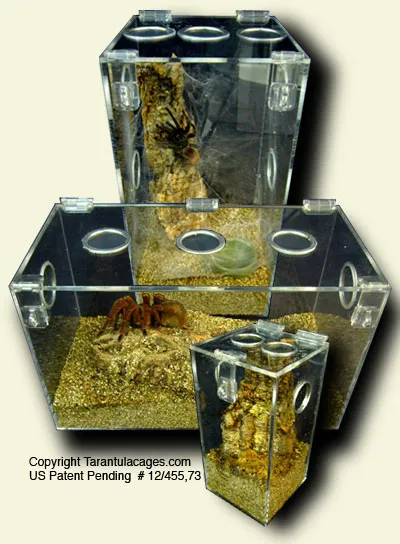
Choosing the right size for your tarantula’s acrylic tank is essential for its well-being. The size of the tank should be appropriate for the size and species of your tarantula. A tank that is too small can restrict movement and cause stress, while a tank that is too large can make it difficult for your tarantula to find food and feel secure. As a general guideline, a terrestrial tarantula should have a tank that is at least two to three times its leg span in width and length. Arboreal species require taller tanks to accommodate their climbing behavior. It’s always better to err on the side of a slightly larger tank, especially as your tarantula grows. Consulting with a tarantula expert or breeder can provide specific recommendations for the species you own.
Factors Affecting Tank Size
Several factors influence the ideal tank size for your tarantula. Consider the species’ adult size and whether it is terrestrial or arboreal. Terrestrial species require more horizontal space, while arboreal species need vertical space for climbing. The activity level of the tarantula should also be taken into account. More active species may benefit from a larger enclosure to allow for exploration. The substrate depth, which should be appropriate for burrowing species, affects the usable space. Finally, think about the addition of decorations and furnishings, which also take up space. Careful consideration of these factors will help you select an acrylic tank that provides your tarantula with ample space to thrive.
Ventilation in Acrylic Tanks
Proper ventilation is critical for maintaining a healthy environment in your acrylic tarantula tank. Good ventilation prevents the buildup of excess humidity, which can lead to mold and fungal growth, and can also cause respiratory issues for your tarantula. Many acrylic tanks come with built-in ventilation systems, often in the form of mesh or slotted vents on the sides or top of the enclosure. Ensure that the ventilation is adequate for your species. The amount of ventilation required will vary depending on the species and the ambient humidity levels in your home. Monitoring the humidity levels using a hygrometer is essential. Adjusting ventilation by partially covering vents or adding additional ventilation can help you find the right balance to support your tarantula’s needs.
How to Maintain a Healthy Environment
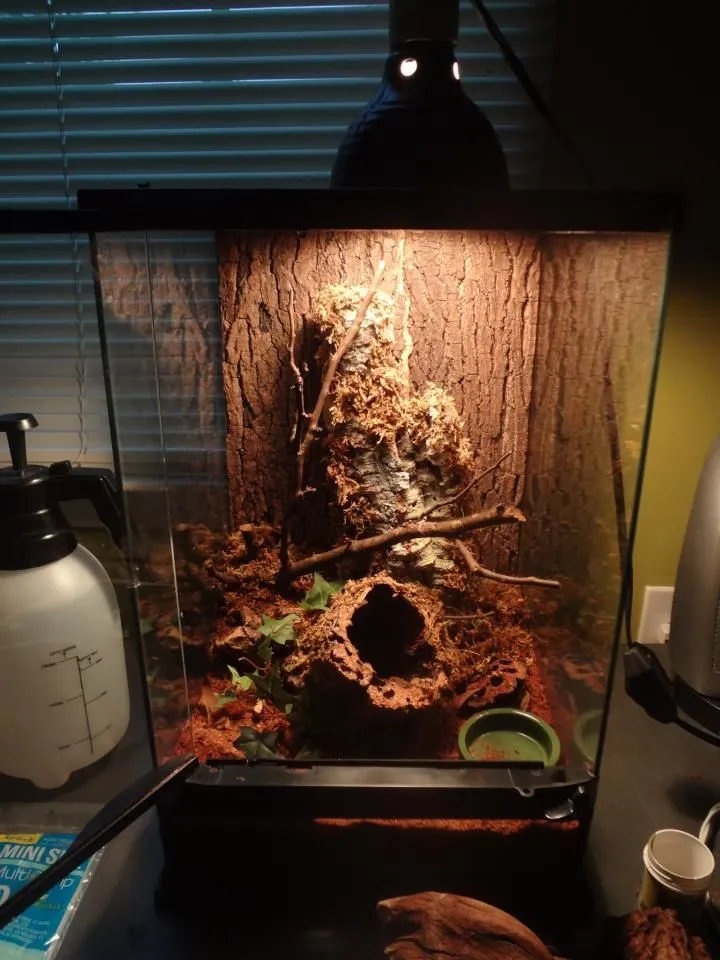
Maintaining a healthy environment for your tarantula in an acrylic tank involves several key aspects. Proper temperature and humidity control are essential. Use a thermometer and hygrometer to monitor these parameters and adjust them as needed. The substrate should be appropriate for your tarantula’s species and should be kept clean. Regular cleaning is vital to remove waste and uneaten food. Provide fresh water in a shallow dish. Choose suitable decorations and furnishings that allow for enrichment and security. Ensure proper lighting. Always research the specific requirements for your tarantula species to create an optimal and healthy environment within its acrylic tank.
Cleaning Your Acrylic Tarantula Tank
Regular cleaning is essential to maintain a healthy environment for your tarantula and keep the acrylic tank in excellent condition. The frequency of cleaning will depend on the species of tarantula, the amount of waste produced, and the humidity levels within the tank. For many species, spot-cleaning, removing any uneaten food, and waste, a few times a week may be enough. A full cleaning, including replacing the substrate and thoroughly cleaning the tank, is usually done every few months, or more often if needed. It’s important to use gentle cleaning solutions that are safe for your tarantula and won’t damage the acrylic.
Regular Cleaning Schedule
Establishing a regular cleaning schedule is key to maintaining a hygienic environment for your tarantula. Spot-clean the enclosure a few times a week, removing any visible waste and uneaten food. Monitor the substrate for any signs of mold or excessive moisture. Perform a partial substrate change every month, replacing a portion of the substrate to maintain cleanliness and reduce odors. Undertake a full tank cleaning every three to six months, completely replacing the substrate and thoroughly cleaning the tank walls, decorations, and accessories. The schedule may need adjustments based on your tarantula’s species and environment, but the consistent cleaning will contribute to a healthy environment.
Best Practices for Cleaning
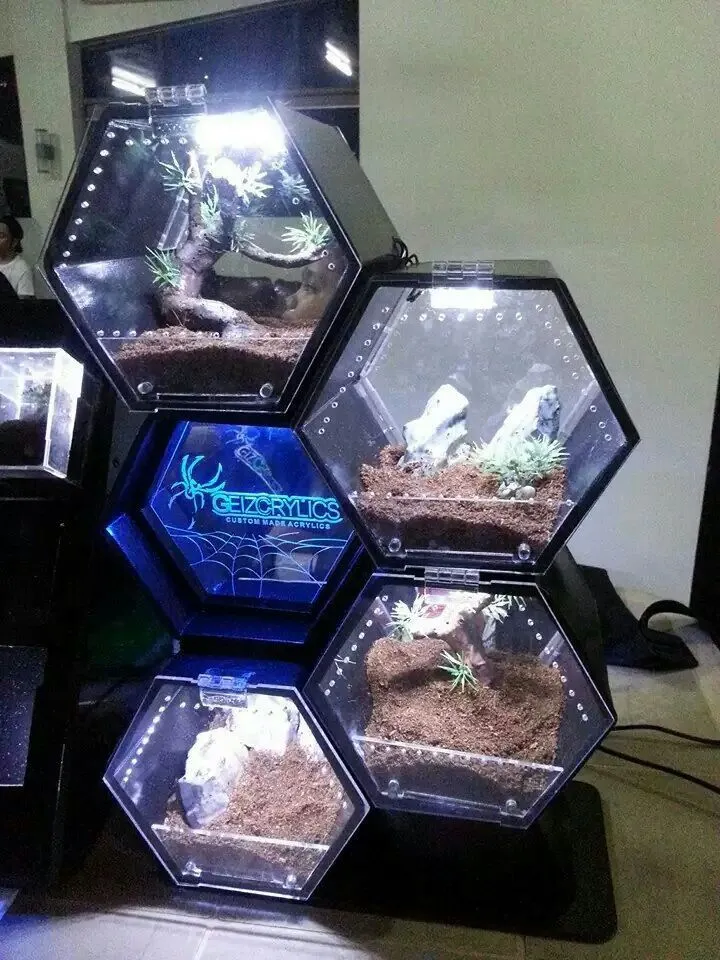
When cleaning your acrylic tarantula tank, use best practices to ensure the safety of your tarantula and the longevity of the tank. Always remove your tarantula to a secure temporary enclosure before starting. Use warm water and a mild, pet-safe soap or a cleaning solution specifically designed for acrylic tanks. Avoid using harsh chemicals, abrasive cleaners, or anything that could scratch the acrylic. Rinse the tank thoroughly to remove any soap residue. Dry the tank completely before returning your tarantula and adding fresh substrate and decorations. Regularly clean the tank to prevent bacterial growth and maintain the tank’s clarity.
Decorating Your Acrylic Tarantula Tank
Decorating your acrylic tarantula tank not only enhances its aesthetic appeal but also enriches your tarantula’s environment. Provide a substrate appropriate for your tarantula’s species, such as coconut fiber, peat moss, or a mix. Include various furnishings, such as cork bark, hides, branches, and artificial plants, to provide places for your tarantula to hide, climb, and feel secure. The addition of decorations can also simulate the tarantula’s natural habitat. Ensure that all decorations are safe, nontoxic, and free of sharp edges or small parts that your tarantula could ingest. Decorations should be appropriate for the species, providing both functional elements and visual interest.
Substrate and Furnishings
The choice of substrate and furnishings is a critical aspect of setting up your acrylic tarantula tank. The substrate should be absorbent, non-toxic, and appropriate for the species. Coconut fiber is a popular choice due to its moisture-retaining properties and natural appearance. Provide hides, such as cork bark, to allow your tarantula to feel secure and retreat. Add branches or climbing structures for arboreal species. Artificial plants can enhance the visual appeal of the tank and provide additional hiding places. Always avoid decorations with sharp edges or small parts that could pose a hazard. The goal is to create a comfortable and stimulating environment for your tarantula.
Essential Accessories for Tarantulas
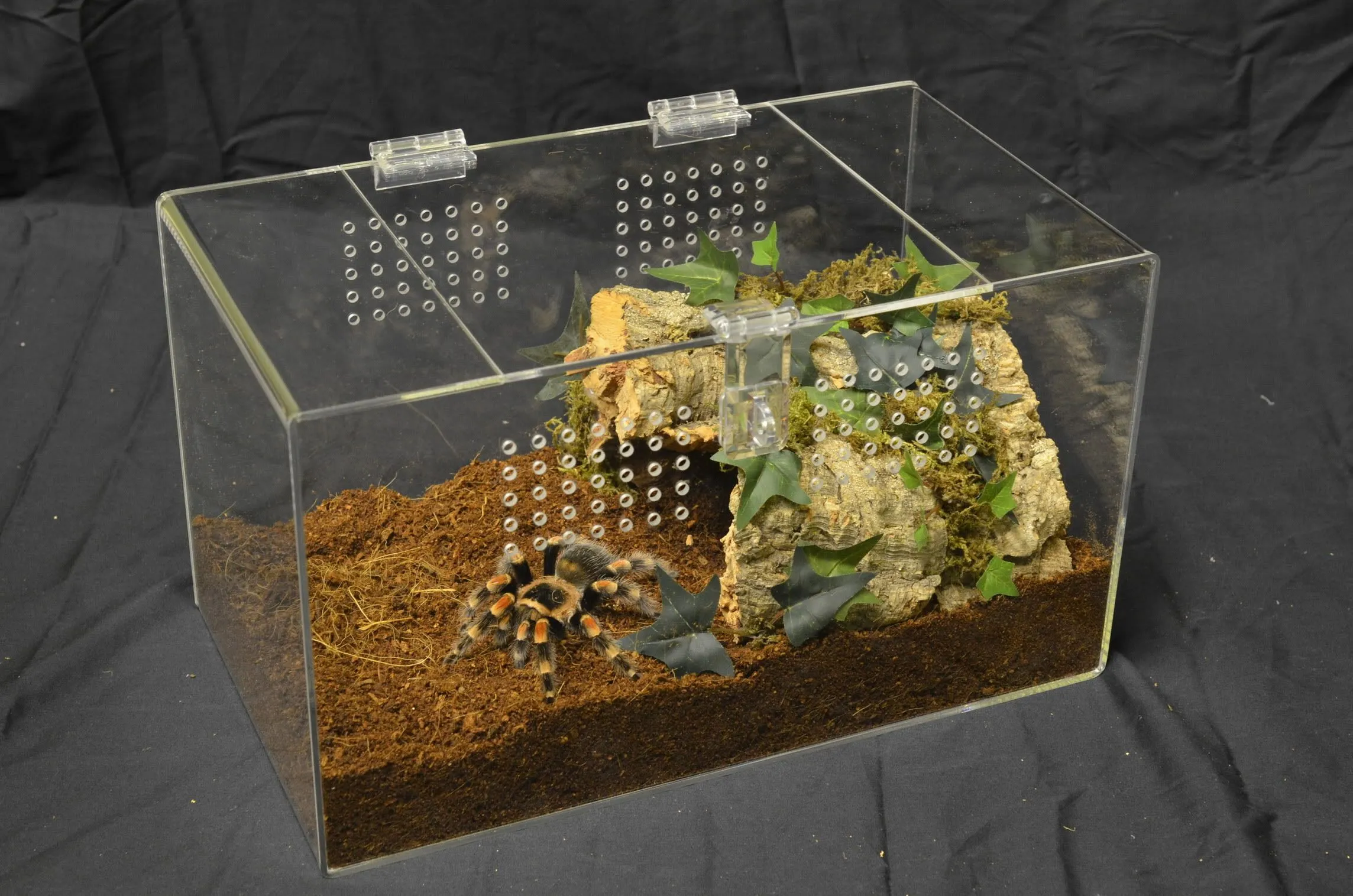
Several essential accessories can make your acrylic tarantula tank more functional and enhance your tarantula’s well-being. A water dish is crucial, and it should be shallow enough for your tarantula to easily access the water. A thermometer and hygrometer are essential for monitoring the temperature and humidity levels within the tank. A spray bottle can be used to mist the enclosure and maintain the desired humidity. Consider adding a small, easily cleaned feeding dish to prevent insects from burrowing into the substrate. The right accessories will ensure your tarantula has the optimal environment in its acrylic tank.
In conclusion, choosing the right acrylic tank is vital for the health and happiness of your tarantula. By considering the size, durability, safety features, and the needs of your specific tarantula species, you can create a comfortable and secure environment. Regular cleaning, proper ventilation, and appropriate decorations will further enhance the well-being of your pet. With proper care and attention, an acrylic tarantula tank can provide a beautiful and safe home for your fascinating arachnid companion.
